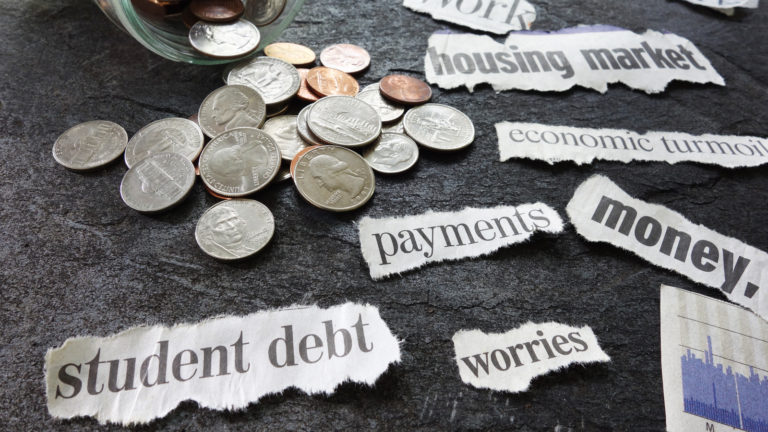Mainly — but not exclusively — because of the relatively strong labor market, the U.S. economy is still on the right track. So why does it feel like so many people are worried?
Interest rates aren’t as crucial to the economic outlook as many believe and are unlikely to push the economy into a recession. Also noteworthy is that consumers’ debt load is not as heavy as many bears have suggested, while the resumption of payments on student loans should not have a major impact on the economy. And while there are risks that could trip up the U.S. economy in the coming months and quarters, they are unlikely to do so.
Let’s take a closer look at some of these factors when it comes to the current state of the U.S. economy.
The Strong Labor Market Is Crucial
Recent data indicates that the labor market is slowing slightly but remains quite healthy overall. In August, the economy added an impressive 187,000 net non-farm jobs, and Americans’ mean hourly earnings jumped 4.3% versus the same period a year earlier. While the unemployment rate ticked up to 3.8%, it remains extremely low from a historical perspective. Job openings came in at 3.8 million, significantly below their peak but still above pre-pandemic levels.
Two-thirds of the U.S. economy is based on internal consumption, and the latter trend, among all but very wealthy and very poor Americans, is dictated largely by the labor market. Consequently, consumption is likely to remain strong, keeping the economy growing at a healthy pace.
Interest Rates Aren’t Everything
Many on the Street act as though fairly moderate changes in interest rate levels are the primary determinant of economic activity. After listening to their assessments, I believe that they are saying that the U.S. economy is sure to go into a tailspin solely because the interest rate on the 10-year Treasury bond rose to close to 5% from 4%.
In other words, when the rate on the 10-year was 4%, the economy was going to be fine. But because it’s headed for 5%, the economy is doomed to contract. I am extremely skeptical of the idea that a one-percentage-point increase in interest rates will be the only determining factor of the strength of the U.S. economy.
That’s especially true because many U.S. businesses likely still have a great deal of money left over either from the U.S. Treasury’s PPP loans or the Fed’s loans during the pandemic. Meanwhile, many consumers are locked into very low mortgage rates.
Consumer Debt and Student Loan Repayment Worries Are Overblown
Many bears have expressed great concern about two issues: Overall consumer debt levels and the resumption of student loan payments this month. But according to the Fed, the household-debt-to-GDP ratio, as of the first quarter of this year, was at its lowest level since at least 2005.
As for student loan payments, according to BestColleges, “The average monthly federal student loan payment for recent bachelor’s degree-recipients is $284.” Meanwhile, there were 43.5 million Americans with student loans as of 2022. Multiplying $284 per month by 43.5 million works out to $148.25 billion.
America’s gross domestic product (GDP) in 2022 was $25.46 trillion. The $148.25 billion figure I cited above equates to just 0.6% of 2022 GDP. So the resumption of student loans should not have a large, negative impact on the U.S. economy or on stocks.
There Are Risks
Some risks, of course, could derail the American economy. If the demand for U.S. bonds weakens further because of fears about America’s huge debt and U.S. leaders do nothing about the situation, interest rates could climb to a point at which they would have a major effect on the economy. But U.S. leaders have shown the ability to act quickly when necessary to prevent major economic problems, so I don’t think that’s a likely scenario.
Additionally, oil prices could theoretically jump to $150, a level that would likely push the American economy into recession. But given the electrification of transportation trend and the fact that the “revenge travel” trend is easing, I don’t expect that threat to materialize.
On the date of publication, Larry Ramer did not have (either directly or indirectly) any positions in the securities mentioned in this article. The opinions expressed in this article are those of the writer, subject to the InvestorPlace.com Publishing Guidelines.

